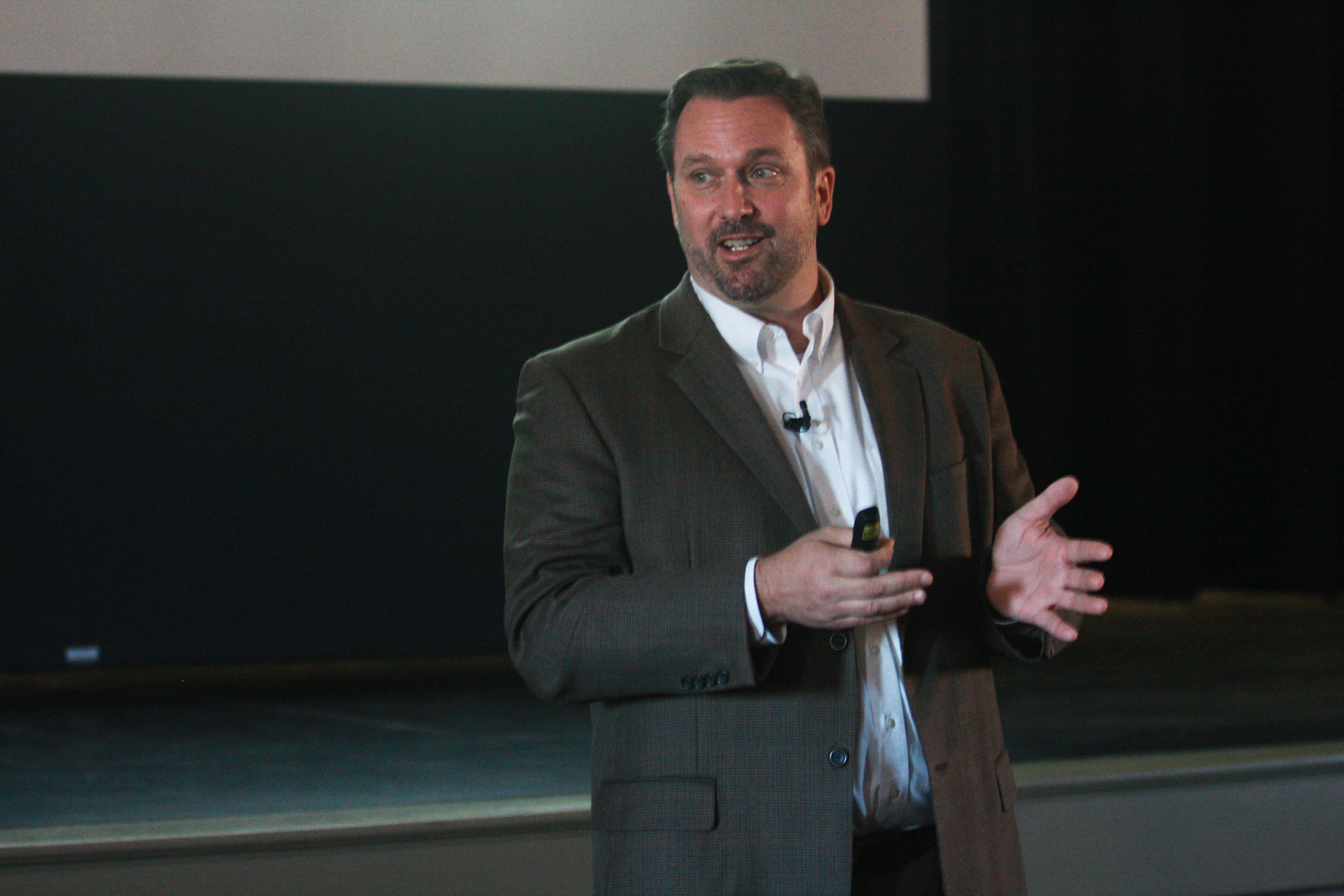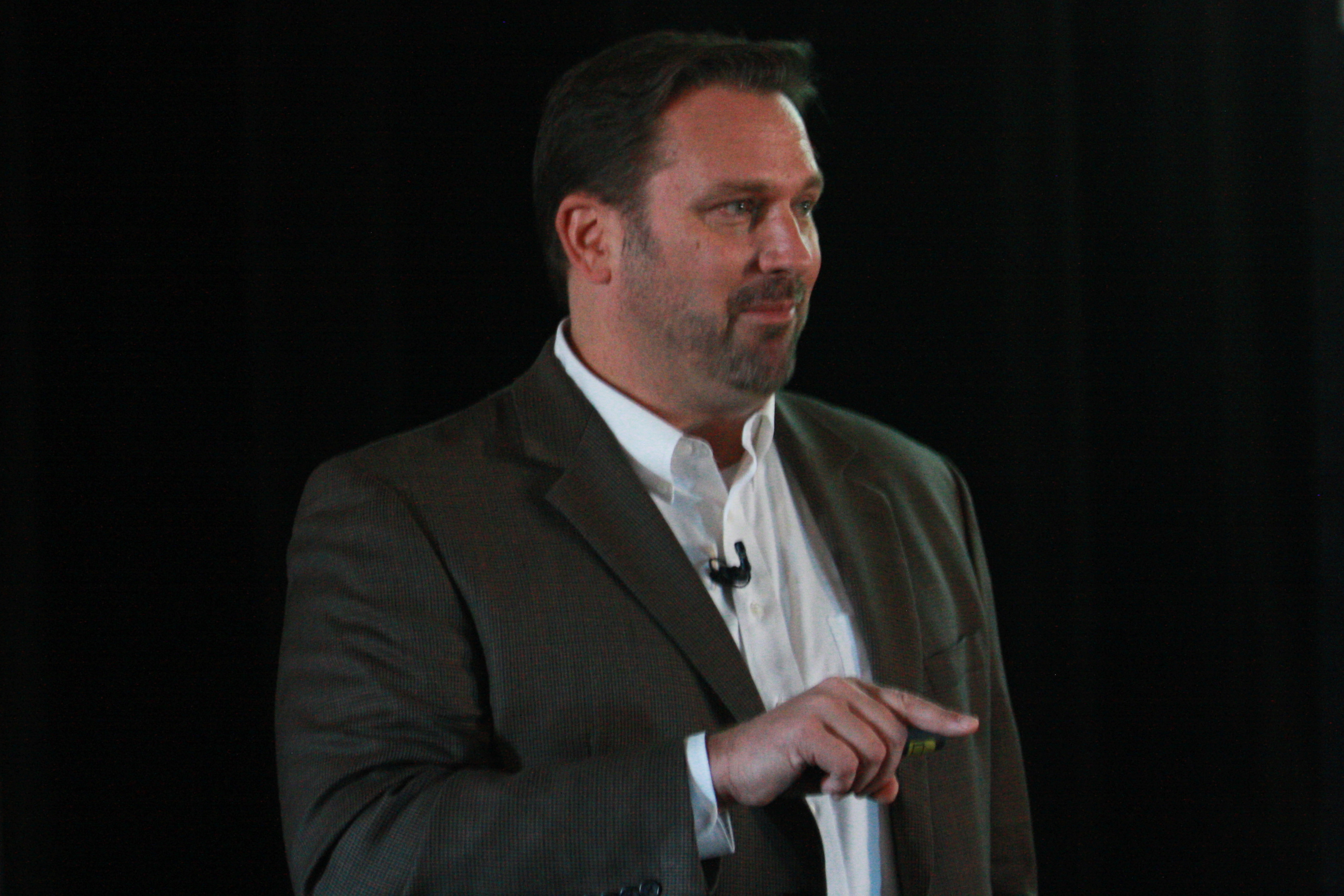Advocating for Tomorrow
Published January 10, 2019
“We’re suddenly designing instruction for a very different set of experiences.”
– Dr. Mark David Milliron
As technology bounds forward in ever-increasing leaps, Dodge City Community College, like many institutions across the country, is becoming more aware that on college campuses today, building a productive student experience requires embracing tomorrow.
Tomorrow includes new, student-centric technology and the ways it is changing the learning environment. Tomorrow also includes new expectations from students about how they receive their instruction, as well as new expectations about what “getting an education” even means to today’s students.
Dr. Mark Milliron was on the DC3 campus Tuesday, speaking with staff and faculty to help spur the conversation about how DC3 can stay atop the unyielding tide of change and help today’s students reach that tomorrow.
Getting educators to reconsider decades of traditional education and entrenched pedagogy is not new to Milliron. He’s been an international education leader and community college champion for nearly 30 years.
When the internet exploded in the Nineties, many educators were definitely not onboard the digital train.
“I had to convince them that it was going to be safe to use email,” he said. “There were people at colleges who got fired for changing the campus communications from cubbyholes to email. Then in the mid-nineties I had to explain to lots of educators, ‘This internet thing, it’s a real thing… you’re going to be using it a lot.’”
Milliron is the co-founder and Chief Learning Officer of Civitas Learning, which uses data analytics and technology to create innovative education solutions. He has worked with schools, educators, and administrators across the country and internationally for nearly three decades.
Milliron has long touted the integration of technology and student-oriented, data-driven instruction models to encourage a more dynamic and effective student experience – which ultimately leads to greater motivation, retention, and completion.
“Mark is one of the most innovative and creative people in education today,” said DCCC President Dr. Harold Nolte, who has been a colleague of Milliron for over two decades. “We’re at a crossroads here. He can be a powerful advocate for some of the things we need to do and he can serve as an expert reference point.”
Much of the intent for Tuesday was to get staff and faculty to consider new instructional design challenges and develop a willingness to try student-focused, data-driven solutions that “radically improve the learning environment and improve the outcome for students themselves,” Milliron said.

Milliron emphasized the myriad ways in which student-focused, responsive instructors and institutions are using student input and hard data to adapt course offerings and instructional delivery.
As a simple example: once uncommon, online classes are now virtually ubiquitous; practically every university has at least a couple bachelor’s degrees that are delivered completely online. Even prestigious universities offer scores of full master’s programs that can be taken entirely online. The continual popularity of online classes means much greater access to students, some of whom may otherwise be unable to attend college due to time or distance constraints.
The ease and convenience of online and hybrid classes make them wildly appealing to today’s students who have ever-busier schedules. Additionally, according to Milliron’s data, the students who are most successful and likely to finish routinely build their class schedule with a blend of online and on site classes, giving them the ability to customize their education in a way that fits their lives.
Colleges are also facing an evolution in the end game for many students. According to Milliron, students who find the most success after their education are the ones who have earned post-secondary credentials with real labor market value.
“Notice I didn’t say a four-year degree,” Milliron said. He noted that a rapidly growing portion of students are seeking combinations of degrees, industry certifications, licensures, apprenticeships and more to accomplish their career goals.
Milliron said that students are increasingly seeking to access homework and class information on mobile devices. Rather than bemoaning their use and attempting to get students to turn them off, Milliron asked instructors to consider that today’s students expect to be able to utilize mobile devices to make access to material easier and more convenient.
The ability to retrieve class information from the phone sitting in their pocket allows students to “steal time to study” when they have a few spare minutes during what are ever-busier daily lives.
Milliron gave an example of an English teacher who, after consulting extensively with students, began making audio recordings of her edits and comments for student papers and giving each student a digital file they could then listen to while making changes. The response was overwhelmingly positive and the quality of writing improved dramatically. Students reported that listening to the comments through their earbuds was like having the instructor right over their shoulder helping them with the assignment.
“There’s more of that coming,” Milliron told faculty members. “Virtual reality and augmented reality are going to cause big changes, too. Students want to leverage this technology and they respond very positively to that type of contextual learning.”

Understanding that life and logistics play at least as important a role in student retention and completion as academic success is key. Milliron pointed out comprehensive studies that show over 40 percent of students who do not complete their education often stop going to school while carrying a grade point average above 3.0 – indicating that factors other than academic difficulties are driving many students away from college.
Studies bear out the increased awareness of social and domestic influences on higher education. Struggles to access sufficient nutrition, unstable housing situations, and inadequate financial or even emotional supports are affecting a high proportion of students.
A poll of 33,000 students from 70 community colleges in 24 states discovered that two-thirds of the students identified as “food insecure” and half identified as “housing insecure.” Milliron emphasized the importance of considering students’ psychosocial perspective in instructional design.
Exciting new tools with endless capabilities, changing expectations about instructional delivery, and an increasingly diverse and wide-ranging student population pose complex challenges for colleges.
“It’s difficult and part of it is because we have a dominant model of education,” he said, “but it’s flipped. Thirty years ago less than 25 percent of students were non-traditional, while today it’s 75 percent. So we’re suddenly designing instruction for a very different set of experiences.”
Milliron does not think that simply throwing new tech and alternative models at higher ed is a panacea, but the willingness to question prevailing assumptions and engage in conversations about change is crucial.
“This is actually exciting,” he said. “I believe this can be a golden age of learning. We have big challenges, but if we do this the right way we can reach even more students who have unique challenges.
“We just need the courage and leadership to engage in data-driven decisions that will ultimately change the trajectory of education.”
Nolte agreed that the goal is not change for the sake of changing, or to simply try the next new thing. Deliberate, strategic shifts, and incorporating new models and tech in what Milliron calls a “crawl, walk, run” process, means that the college can use real data to help make a student’s time and effort at DC3 productive and rewarding.
“You don’t throw the baby out with the bathwater,” Nolte said, “but many of these systems are very beneficial to students and ultimately good for our college. So I think you look at what’s innovative and what’s proven to work and then see where it might be incorporated.”
By Scott Edger